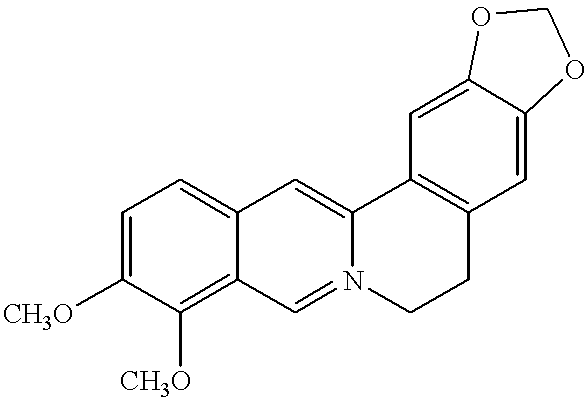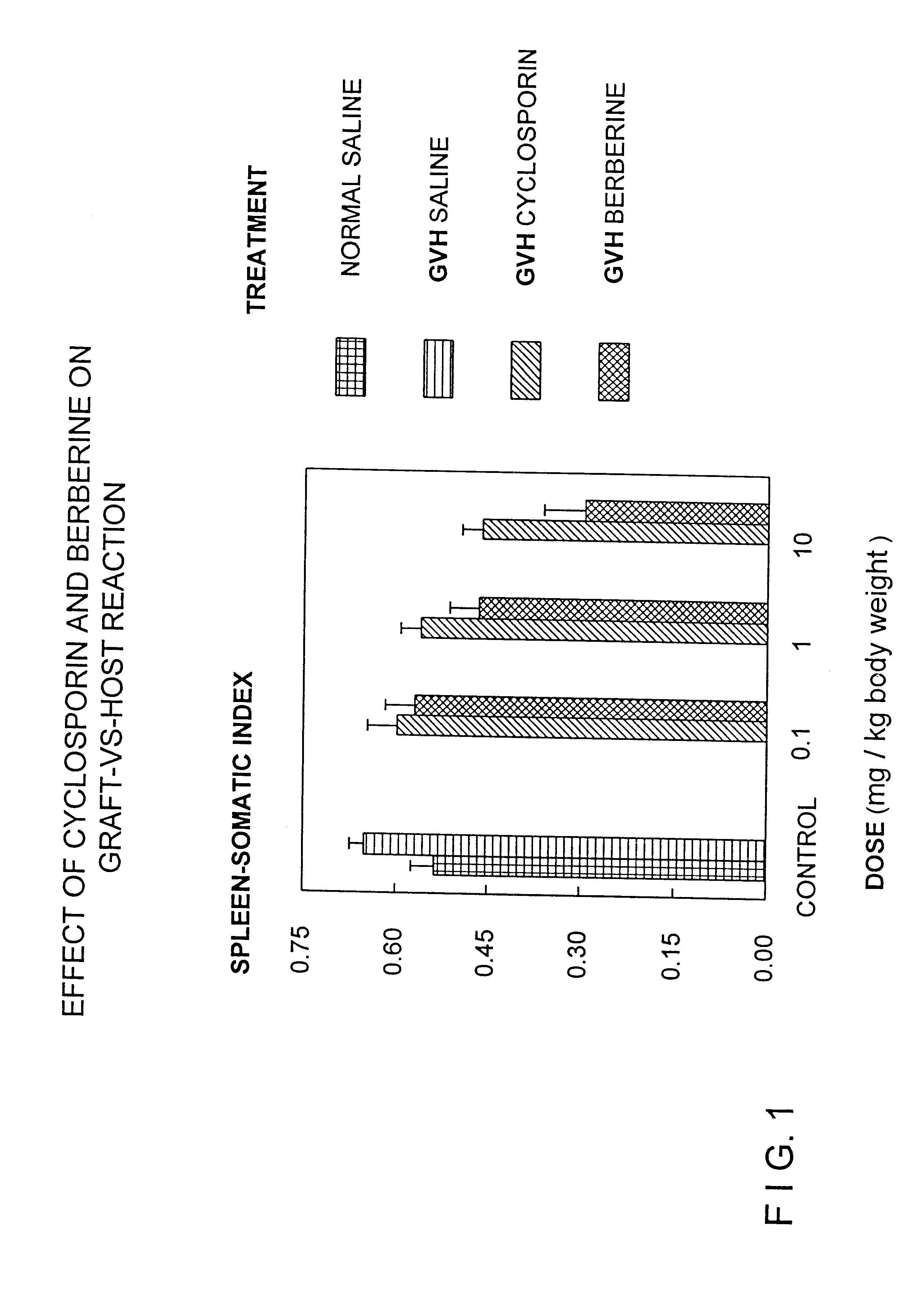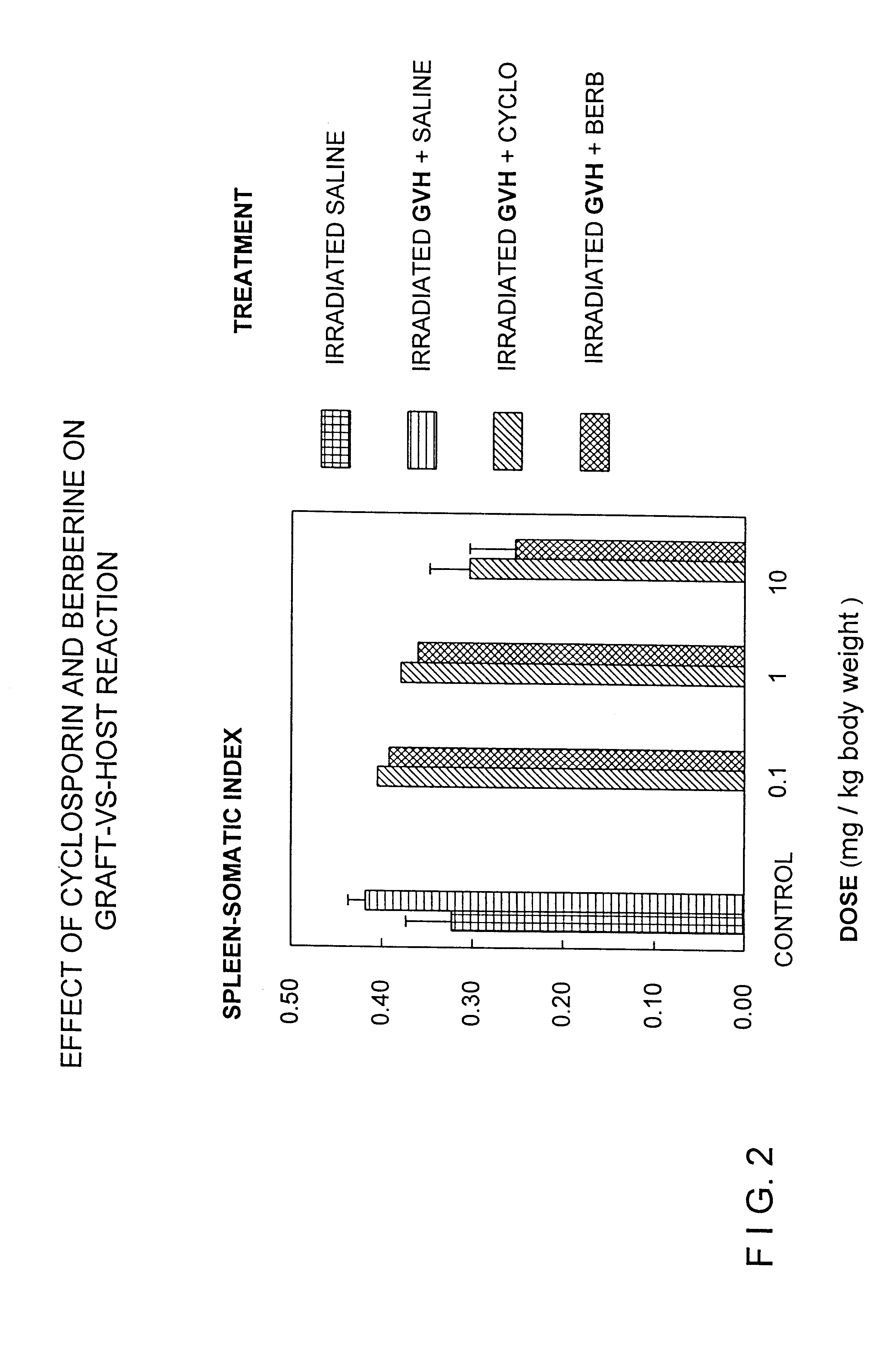Methods for prevention and treatment of septic shock
a septic shock and treatment method technology, applied in the direction of biocide, heterocyclic compound active ingredients, drug compositions, etc., can solve the problems of septic shock, morbidity and mortality, extravagance of activated neutrophils, tissue damage,
- Summary
- Abstract
- Description
- Claims
- Application Information
AI Technical Summary
Benefits of technology
Problems solved by technology
Method used
Image
Examples
example-2
BALB / c inbred mice were given sub-lethal irradiation (450 rads) and were grafted (i.p. or i.v. route) with allogenic splenocytes from DBA / 2J inbred mice on day-0. Graft-recipient animals were divided into experimental and control groups. Each experimental and control group contained a minimum of 6 mice. Experimental groups were injected intra-peritoneally daily from day 1-7, with berberine sulphate at a dose range of 0.1-10 mg / kg of body weight of the animal or injected intra-peritoneally daily from day 1-7 with cyclosporin at a dose range of 0.1 to 10 mg / kg of body weight; the control group was treated with saline. Animals were sacrificed on day-8 and spleen and body weights were recorded. The treatment with berberine sulphate (10 mg / kg) showed significant inhibition of GVH in comparison to control appeared more potent than cyclosporin as indicated by the splenomegaly index (FIG. 2).
example-3
Normal BALB / c inbred mice were sensitized to ovalbumin by a single footpad immunization with complete Freund's adjuvant on day-0 and were divided into experimental and control groups. Each experimental and control group contained a minimum of 6 mice. Experimental groups were injected intra-peritoneally daily from day 1-7, with berberine sulphate at a dose range of 10 mg-0 mg / body weight of the animal; the control group was injected with saline. On day-8, popliteal lymph node cells (PLNC) were isolated and challenged in vitro with ovalbumin or T cell mitogen, Con-A. While the pLNC from saline treated mice showed normal mitogenic and antigen recall response, those from berberine sulphate treated mice showed significant suppression of antigenic response to ovalbumin while maintaining normal mitogenic response to Con-A. (FIG. 3).
The results obtained indicate that berberine inhibits T cell activation in response to specific antigenic challenge by blocking certain signal transduction step...
example-4
F-1 hybrid of BALB / c-DBA / 2J mice were used as recipient of splenocytes from one of the parental strain (semi-syngenic transplant). The splenocytes were grated intra-peritoneally or intra-venously in F-1 mice on day 0. Graft-recipient animals were divided into experimental and control groups. Each experimental and control group contained a minimum of 6 mice. Experimental groups were injected intra-peritoneally, daily from day 1-7, with berberine sulphate at a dose range of 10 mg-0.1 mg / kg body weight of the animal; control group was treated with saline. On day-8, all the groups were given a lethal dose of pathogenic strain of escherichia coli or bacterial endotoxin, lipopolysaccharide (LPS), intra-peritoneally. While all animals in control group died within 24 hours, 80% of the animals treated with berberine sulphate (10 mg / kg) survived (FIG. 4).
PUM
| Property | Measurement | Unit |
|---|---|---|
| Time | aaaaa | aaaaa |
| Dimensionless property | aaaaa | aaaaa |
| Time | aaaaa | aaaaa |
Abstract
Description
Claims
Application Information
 Login to View More
Login to View More - R&D
- Intellectual Property
- Life Sciences
- Materials
- Tech Scout
- Unparalleled Data Quality
- Higher Quality Content
- 60% Fewer Hallucinations
Browse by: Latest US Patents, China's latest patents, Technical Efficacy Thesaurus, Application Domain, Technology Topic, Popular Technical Reports.
© 2025 PatSnap. All rights reserved.Legal|Privacy policy|Modern Slavery Act Transparency Statement|Sitemap|About US| Contact US: help@patsnap.com



